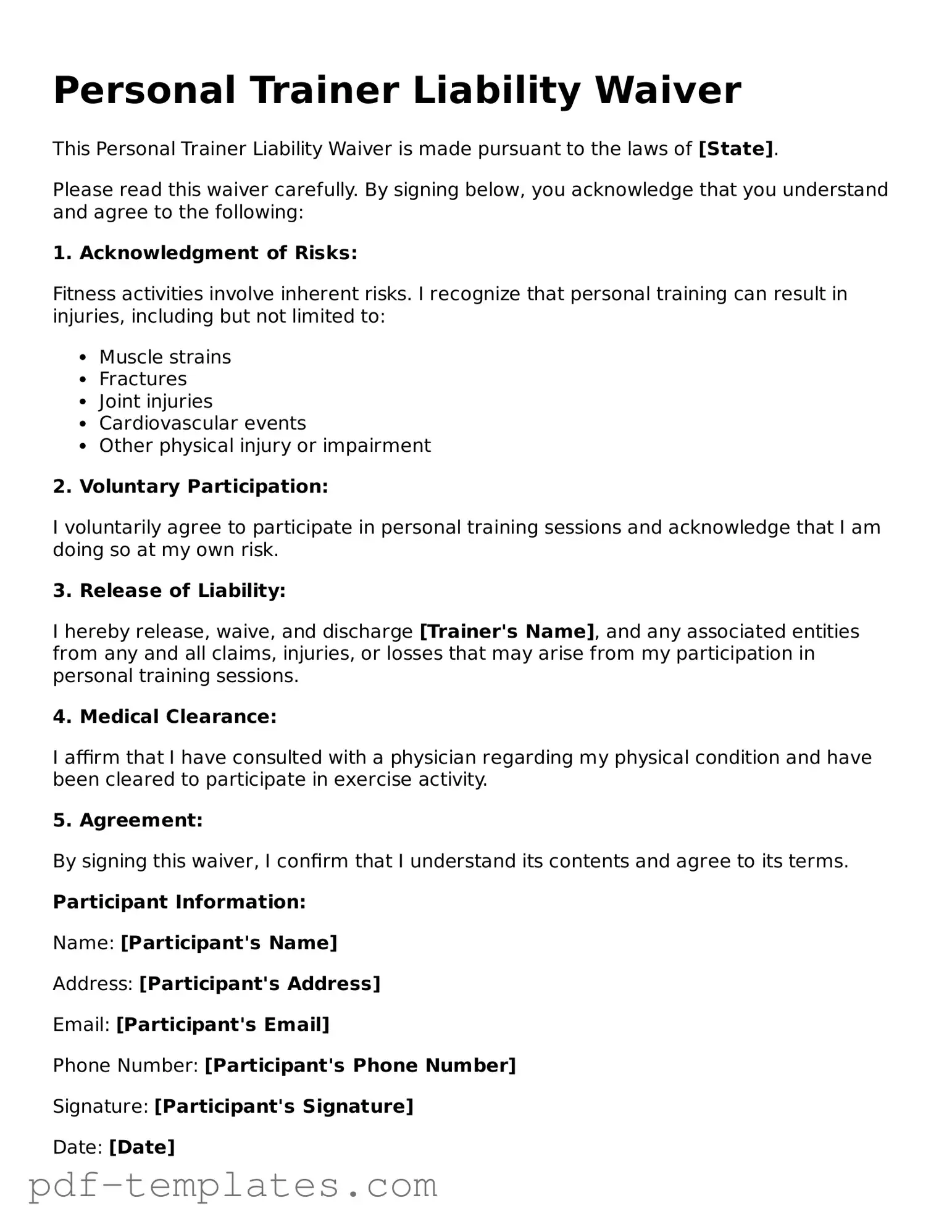When engaging in personal training, both clients and trainers share a commitment to safety and well-being. A Personal Trainer Liability Waiver form plays a crucial role in this relationship, serving as a protective measure for trainers while outlining the responsibilities of clients. This form typically includes essential elements such as acknowledgment of inherent risks associated with physical exercise, a release of liability for injuries that may occur during training sessions, and an affirmation of the client’s health status. By signing this document, clients agree to assume responsibility for their own health and safety, which fosters a clearer understanding of the expectations and limitations inherent in personal training. Moreover, the waiver often emphasizes the importance of open communication between the trainer and client regarding any medical conditions or concerns, ensuring that both parties are aligned in their approach to fitness. In essence, this form not only safeguards trainers from potential legal claims but also empowers clients to take an active role in their fitness journey.
